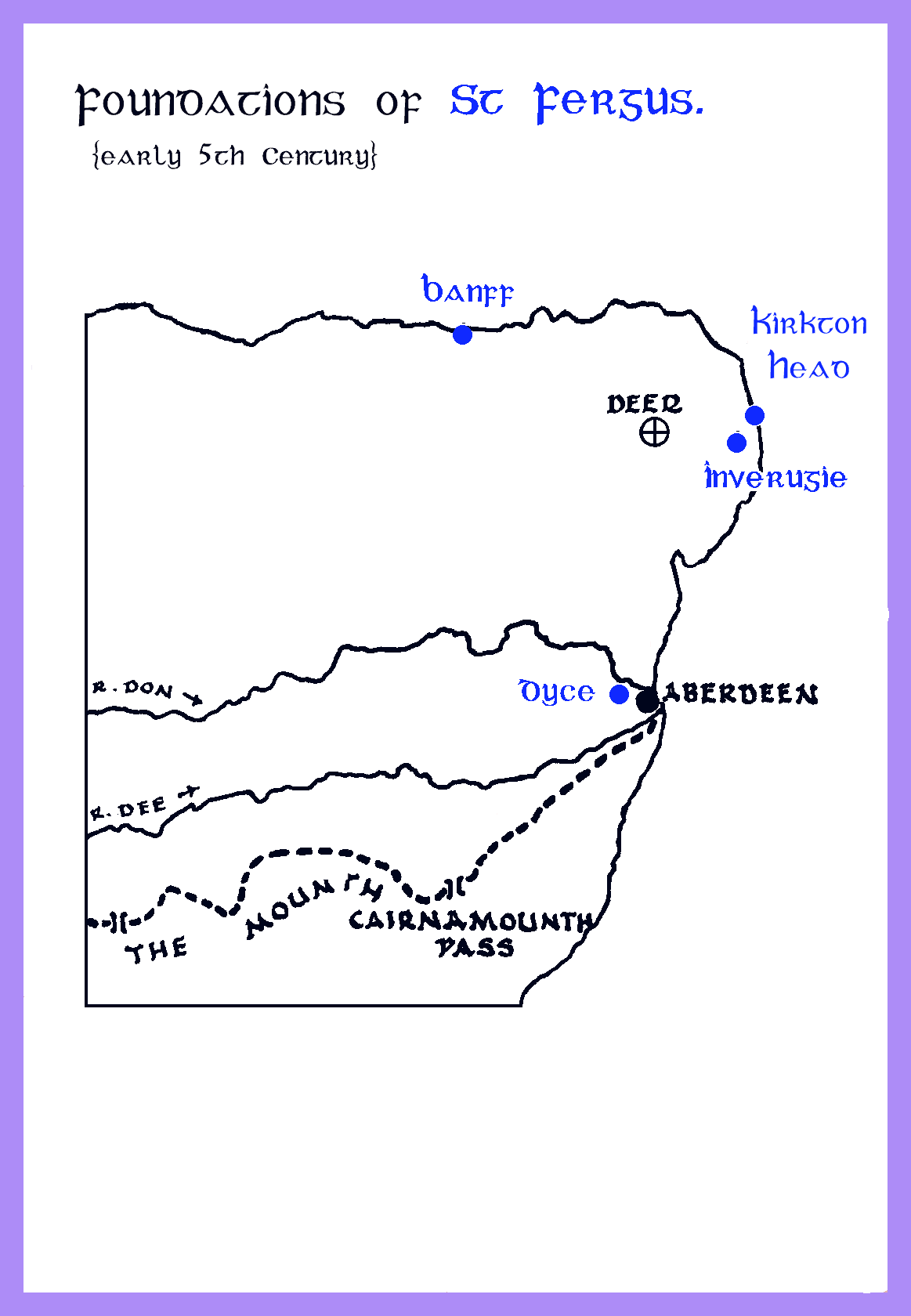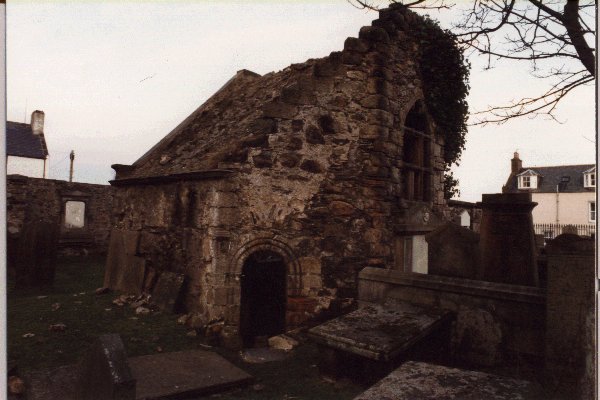
St Fergus.
St Fergus was a companion of the great master St Drostán, along with St Colm and St Medan. He was active both in the area of Buchan (near to Drostán's foundation at Deer) and in the province of the Pictish tribe of the Ce (now known as Caithness). He is said to have been a Pict by birth and is sometimes known as St Fergus the Pict.
His foundations are not numerous but they are important. Indeed, parts of the land near the coastline are still named after him, including St Fergus' Moss and the village of St Fergus itself with its little church, near Kirkton Head, which was founded by the great man himself. Many of today's oil-workers have links with the terminal at St Fergus but how many, I wonder, know of the ancient link with Drostán's friend. The churches at Inverugy and Banff may have been his foundations also.

St Fergus was patron saint of Wick. His church there is believed to have stood in pre-Reformation times near the east end of the town, at a place called Mount Halie. A stone image of him existed in the burgh till 1613, but was then destroyed by the Rev Dr Richard Merchiston of Bower, who was noted for his zeal in abolishing "Popish" survivals. It is said that the local people were so enraged at the iconoclasm of the minister that they drowned him in the river of Wick as he was on his way home! The report went abroad that St Fergus himself did the drowning, and was seen astride of the minister holding him down in the water! A local fair held on the 24th November was from ancient times known as Fergusmas.
St Fergus does not appear to have had an altar dedicated to him in the cathedral of Aberdeen but, in an inventory of valuables from 1464, reference is made to a silver-plated reliquary in the form of an arm, described as brachium argenteum sancti Fergusii cum ossibus ejusdem, i.e. the silver arm of St Fergus with the bones of the same. The parish church of Dyce, near Aberdeen, was dedicated to St Fergus who is said to have founded the original church there. Indeed the parish was at one time known as the Chapel of St Fergus near Moss-Foetach.

Fergus is said to have died at Glamis where a cave and a well bear his name. It is said that his relics were carefully preserved at Glamis until an abbot of Scone in the time of James IV (1488-1513) removed the head while providing a more splendid marble tomb for the body. {King James is said to have provided a silver case for the head.}
There is an alternative story {Jocelin: Life of St Kentigern} that Fergus, by now a very old man, died in the presence of St Kentigern who, placing his body in a cart to which he yokes two untamed oxen, took his precious burden to a cemetery previously consecrated by St Ninian. This cemetery is thought to be where the great medieval cathedral of Glasgow now stands.
In the Oxford Dictionary of Saints, Fergus is said to have been an Irish bishop of the early 8th century whose festival is held on 27th November. He is said to have ministered to the Picts of Scotland and may be the same "Fergustus episcopus Scotiae Pictus" who took part in the council of Rome in AD721. The reader may well wonder if there were, in fact, two of the name who ministered to the Pictish tribes of Alba.
e-mail: admin@cushnieent.force9.co.uk
© 2005 Cushnie Enterprises